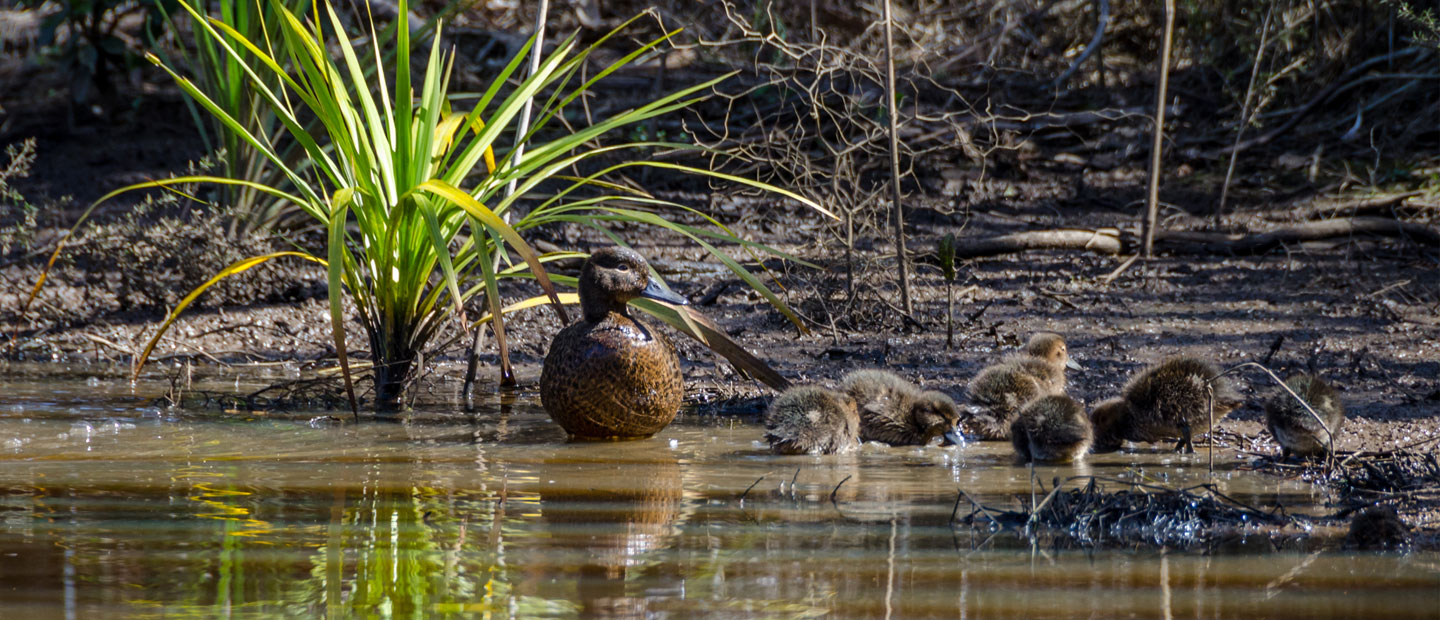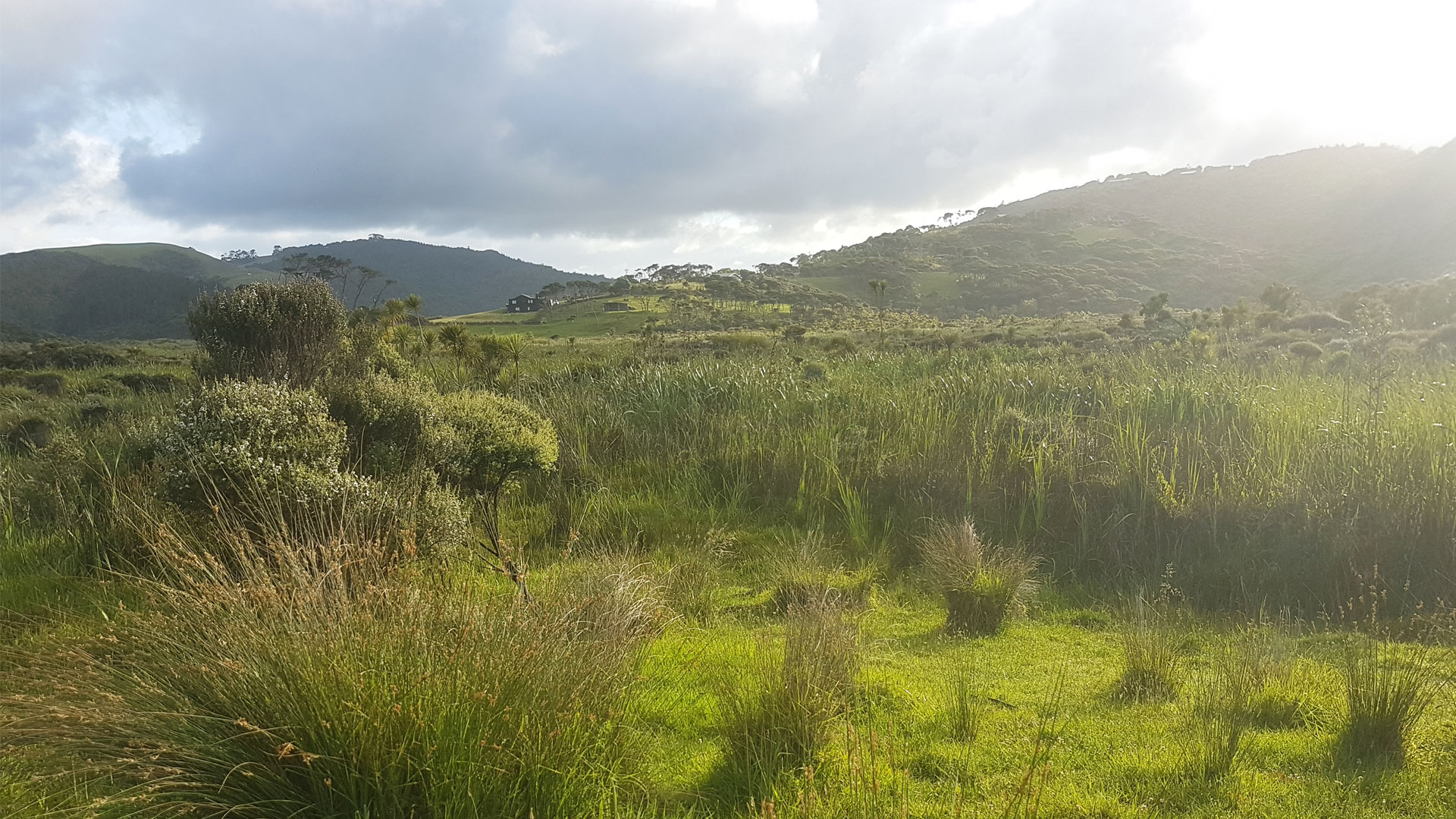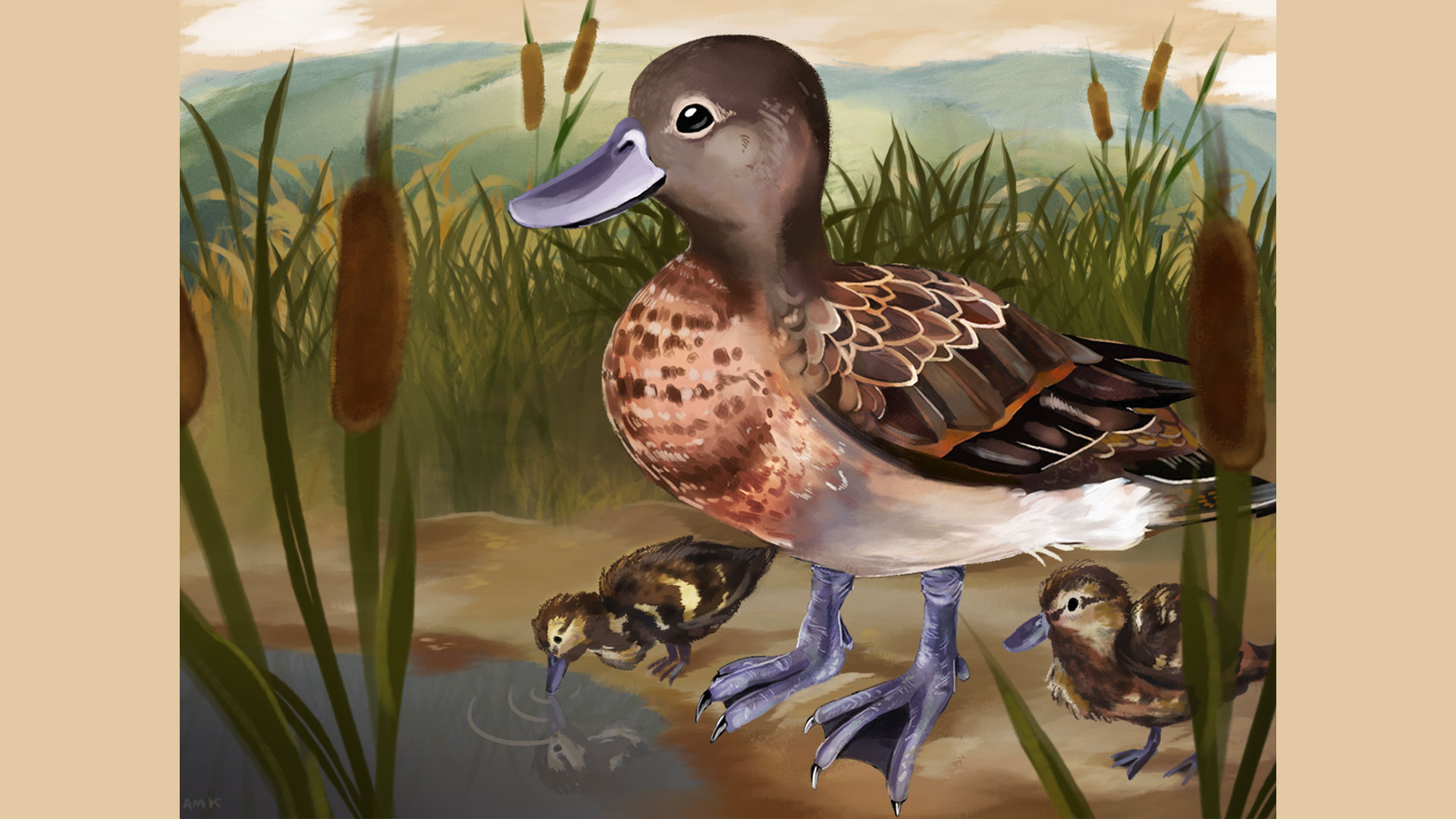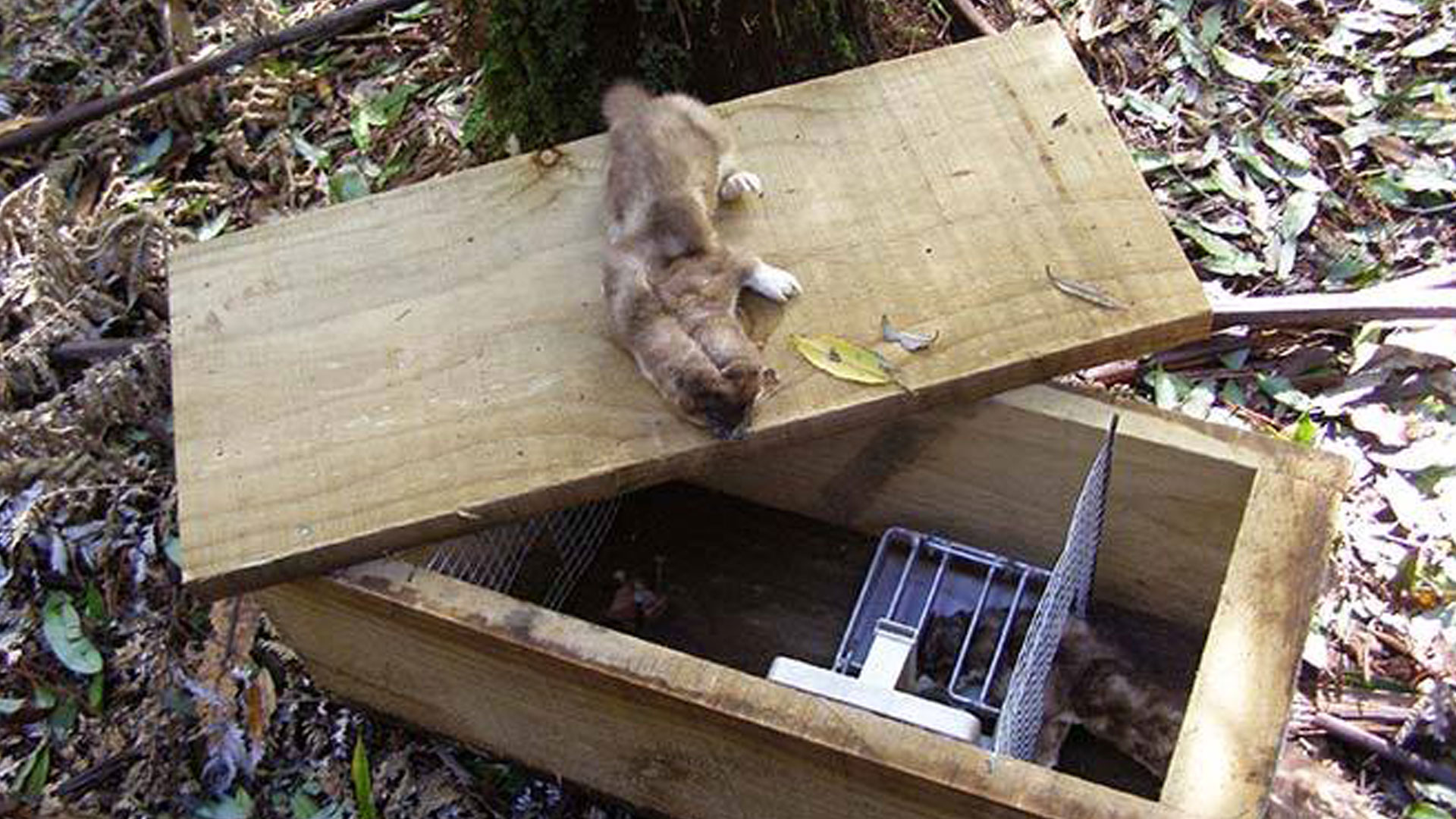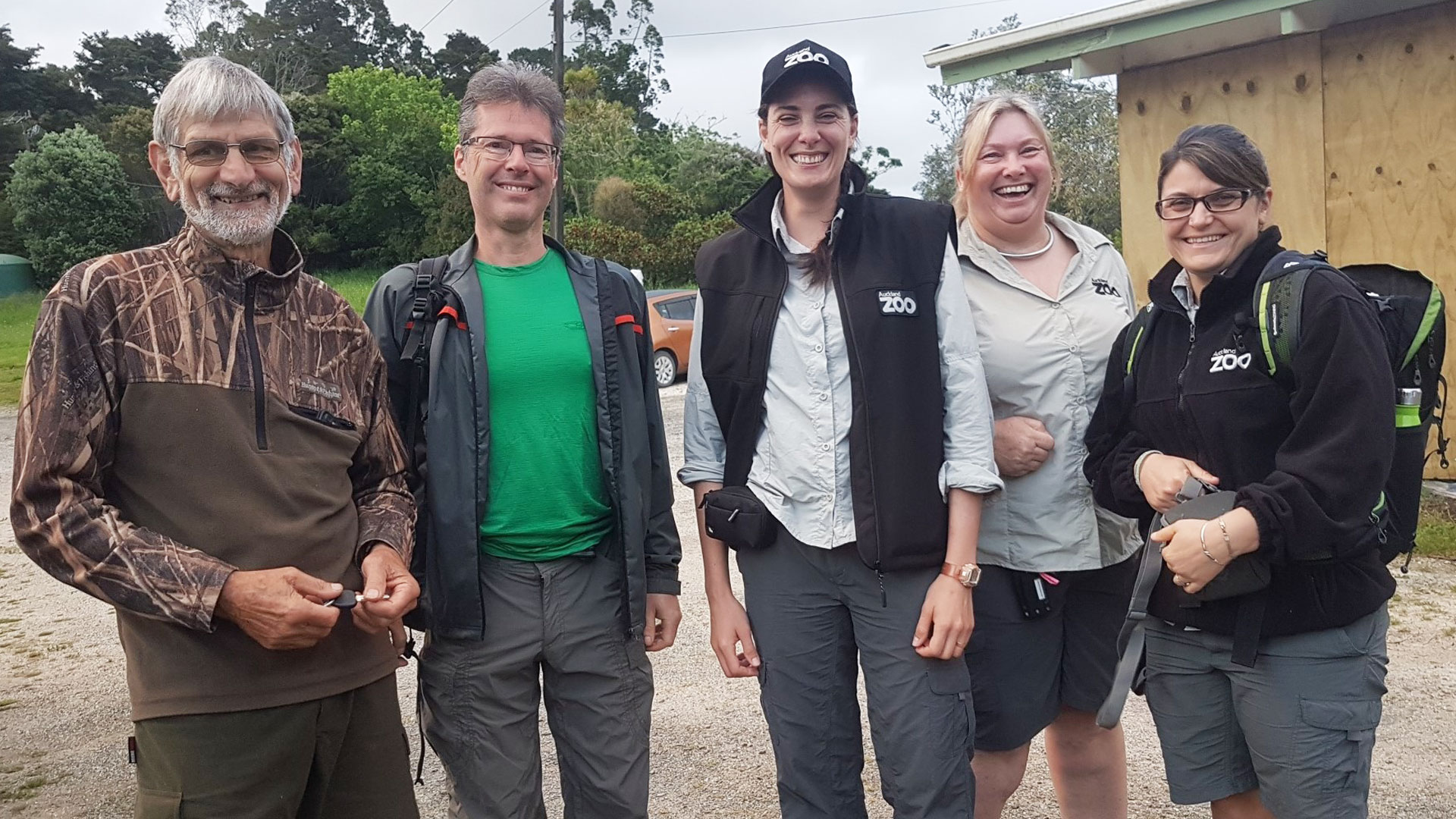If you listen very carefully at Te Henga, you might hear the soft whistle of Aotearoa’s rarest waterfowl. More than 300 plant and 45 bird species call this mighty wetland home, including the humble pāteke, or brown teal (Anas chlorotis). She’s smaller than the average mallard, and her feathers are a russet brown; her eyes are soft and dark, adapted for nocturnal dabbling of freshwater plants. She waddles through the raupo and glides through the stream with a string of ducklings in tow. Common in pre-colonial times, it is only in the last decade or so that such a sight has been possible
Pāteke have long been displaced, unable to find a safe place to settle down in the modern world. Feral cats, stoats and rats prowl in the swampy undergrowth, stealing eggs from the nest, snatching up unsuspecting ducklings and even predating the defenseless parents. By the 1970’s, only about 600 pāteke remained due mostly to the havoc wreaked by introduced mammal predators combined with the unceasing drainage and redevelopment of Aotearoa’s precious freshwater wetlands - now the country’s most threatened habitat.
John Sumich from Forest & Bird decided that things needed to change, and he would need support and funding to make it happen. He knew that there was a national recovery strategy for pāteke and they needed more protected places to live, but picking a location isn’t as simple as throwing a dart into a map. How and where do you begin to create a pāteke utopia? Forest & Bird’s Waitakere branch pondered it for a while. Their Matuku reserve had been proposed as a pāteke release site to the pāteke Recovery Group but it was considered too small. Nearby, however, was Tāmaki Makaurau’s largest remaining wetland, Te Henga, whose 160 hectares of wetland, native forest, and rolling fields was any duck’s dream. One major problem remained: predators were still at large.
Establishing predator control was pivotal in order to introduce pāteke, but no easy job. Landowner sensitivity and the arduous nature of two lengthy main trap-lines required a professional touch. With support from Auckland Council and funding from Auckland Zoo, a contract trapper was employed to set and routinely check more than 100 humane DOC 200 traps, later adding more in accessible locations for local volunteers to manage. Upstream of the wetland, a property christened Matuku Link was later established for visitors, conservation volunteers and plant nurseries and the combined Habitat Te Tenga was born.
The 22 January 2015 was a homecoming party for ducks. Twenty pāteke were released and waddled and flapped their way into the restored and predator-reduced habitat, cheered on by team members and local residents, and welcomed by Te Kawerau a Maki. The ducks quickly settled in and, with an 80% survival rate during the first year, 80 new pāteke were translocated there to join the club. Ducklings were born and began to thrive.
How many pāteke call Te Henga home today? Its hard to be sure, the wetland is large and rivers are fringed with dense raupo, sedge beds and willow trees. “Whereas some birds can be surveyed by means of call playback as in the case of puweto,” says John Sumich, “pāteke can only be surveyed by direct observation. So we have to fall back on ad hoc sightings in the wetland and at sites where pāteke have dispersed.” While a formal census isn’t possible, radio transmissions attached to the birds and local sightings indicate that pāteke are establishing in Habitat Te Henga as hoped.
The pāteke’s success must be attributed entirely to assiduous pest control. In a typical year more than 100 mustelids andand more than 300 rats are trapped - a necessity which would otherwise see pāteke and their threatened neighbours such as matuku (Australasian bittern) and puweto (spotless crakes), locally extinct. John’s future goals for Habitat Te Henga are to maintain the funding streams that protect the wildlife, and perhaps to be able to extend predator control in a more formal and sustained way on additional properties.
With support from Auckland Zoo’s Conservation Fund, the project team is able to maintain an ongoing trapping network which helps to establish a safe haven for pāteke and other threatened native birds. Auckland Zoo further supports the Habitat Te Henga initiative with animal handling expertise during pāteke translocations; breeding pāteke at the zoo for this and other release programmes and rodent density monitoring throughout the Matuku Link three times per year.
Every visit to the zoo, donation or purchase from our Zoo Shop allows our staff to carry out and support valuable work like this, providing a future for wildlife and the wild places they live in. We’re proud and honoured to have helped these pāteke come home.


